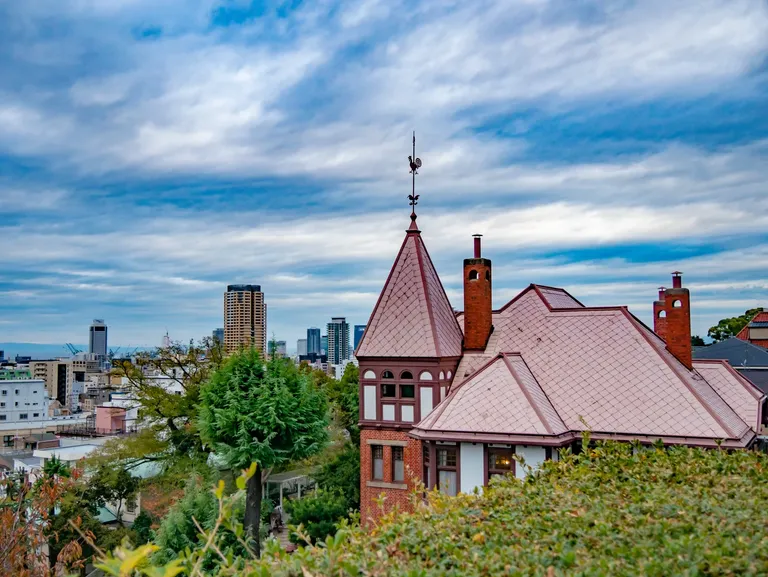
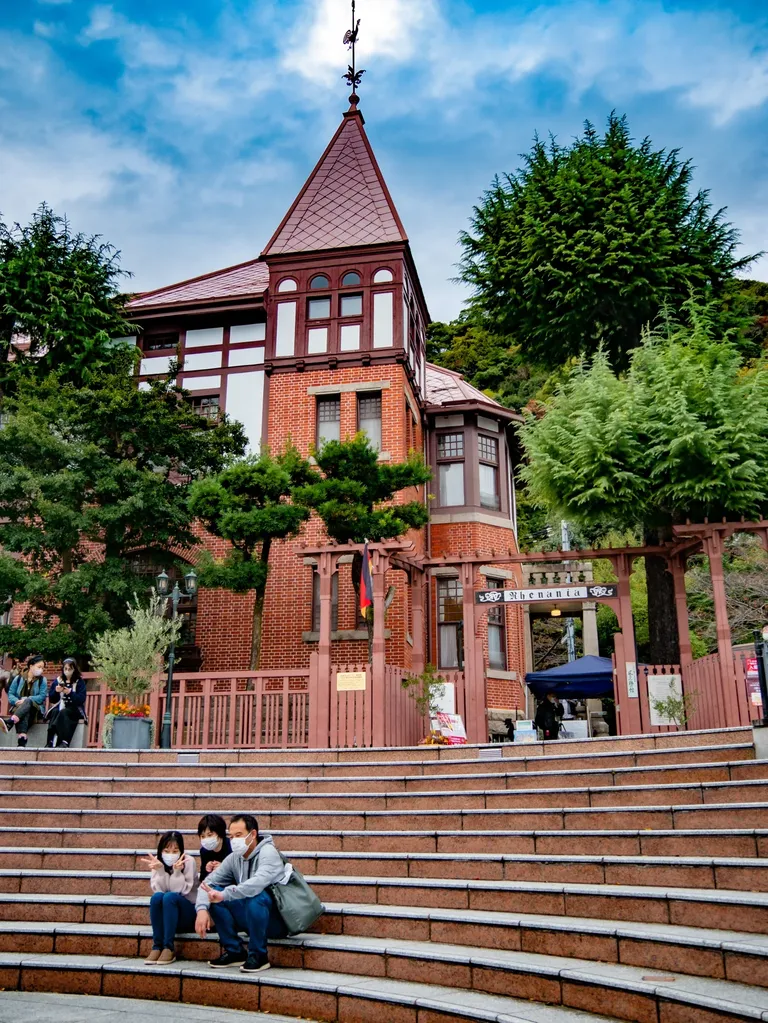
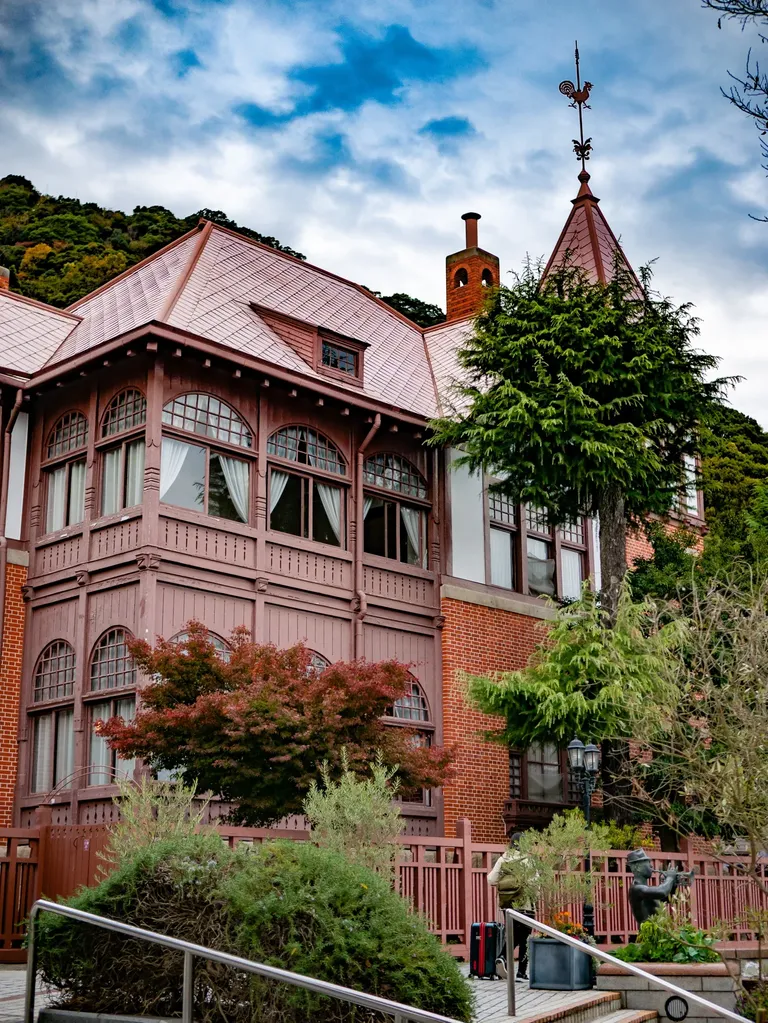
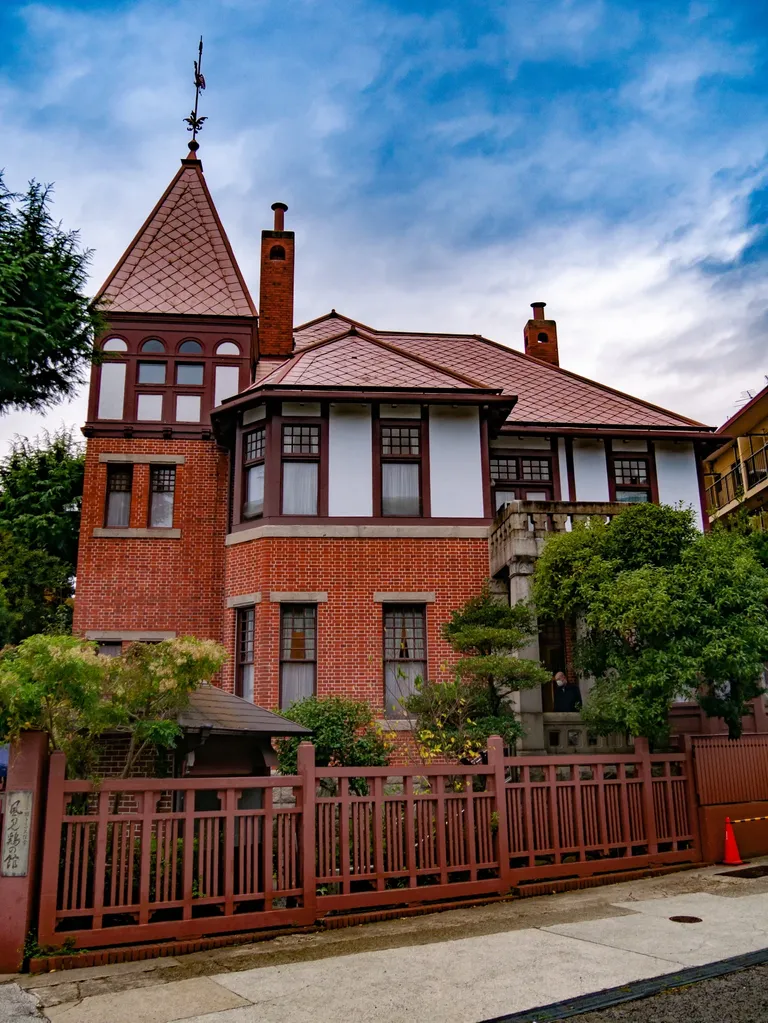
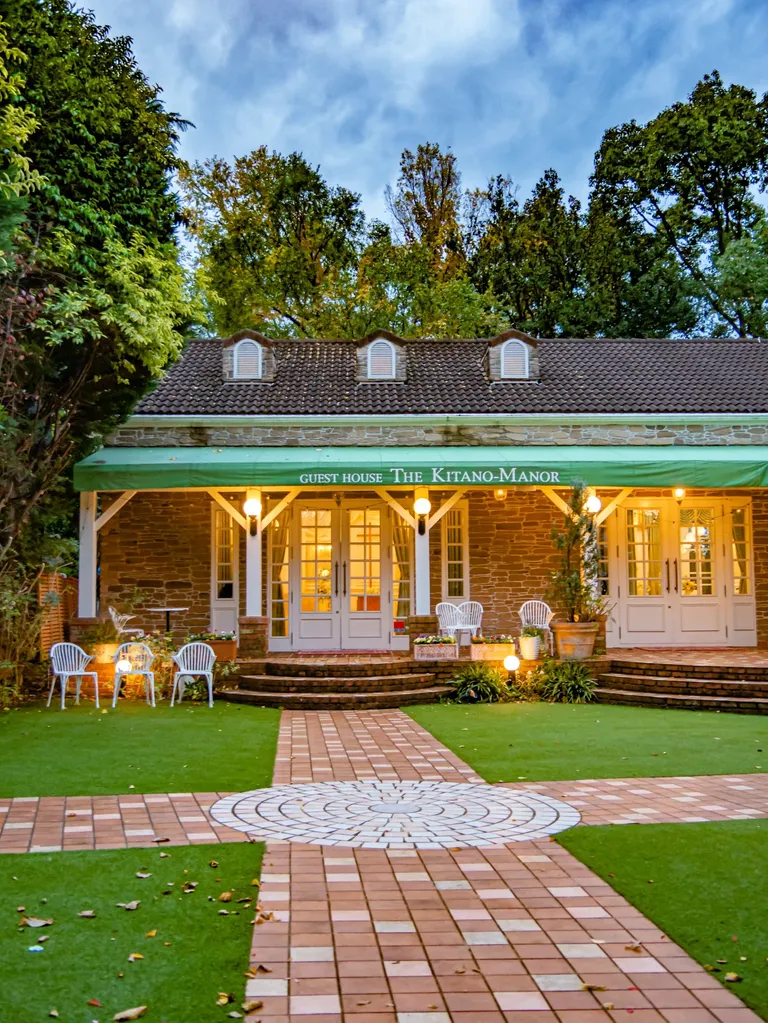
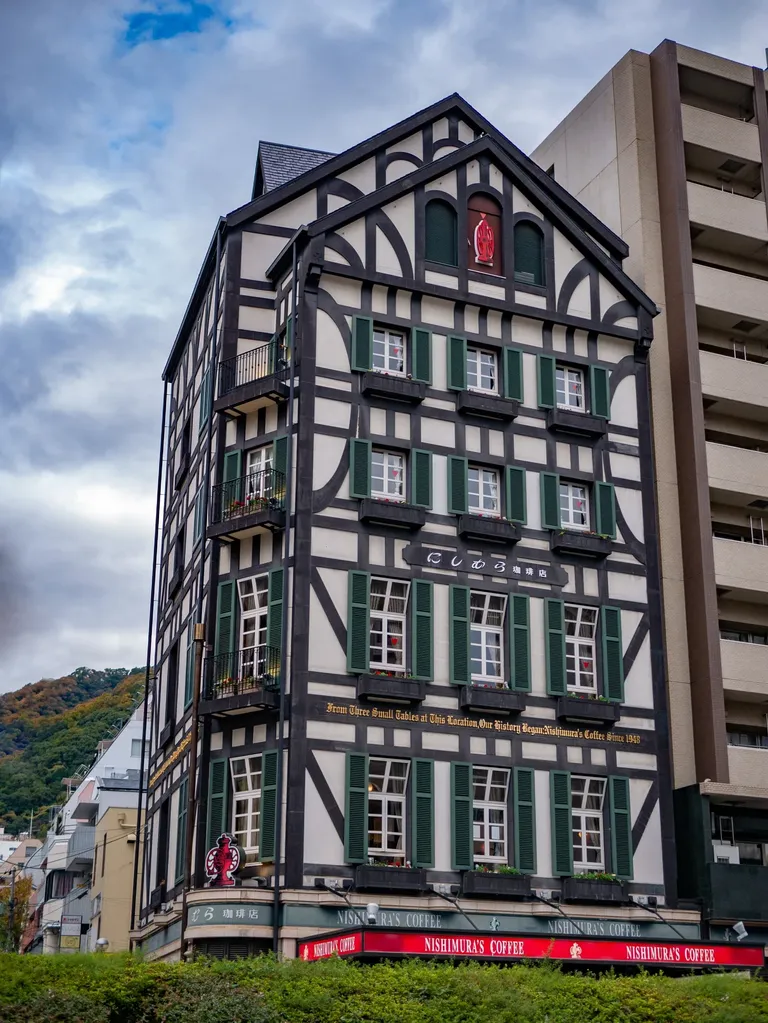
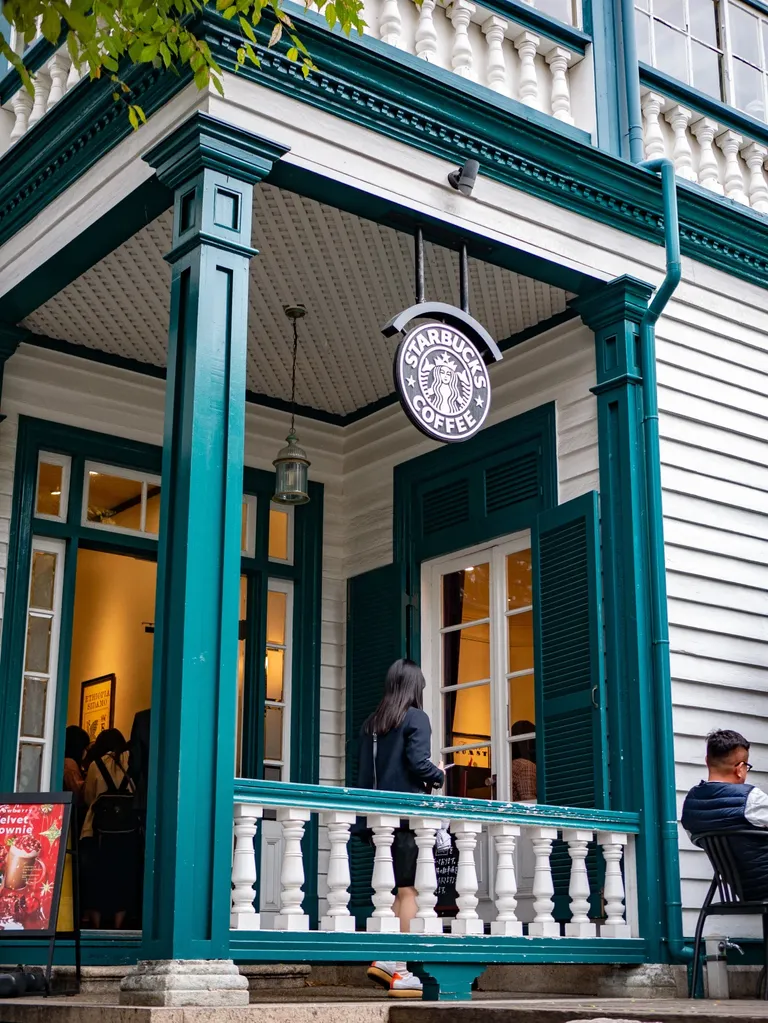
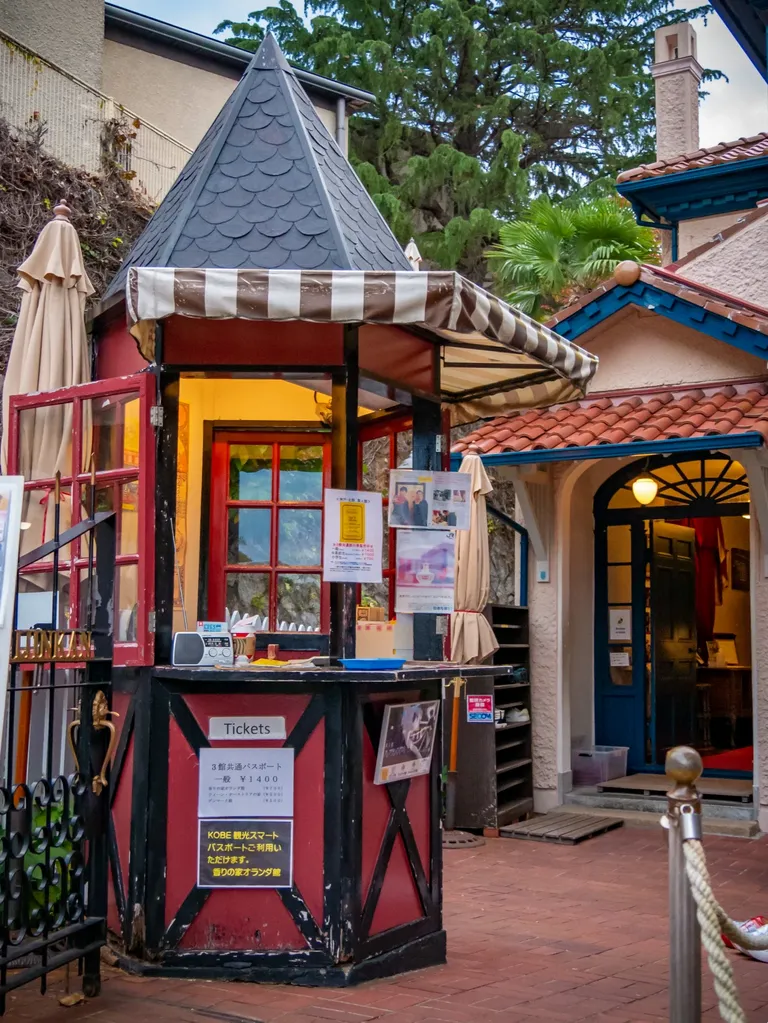
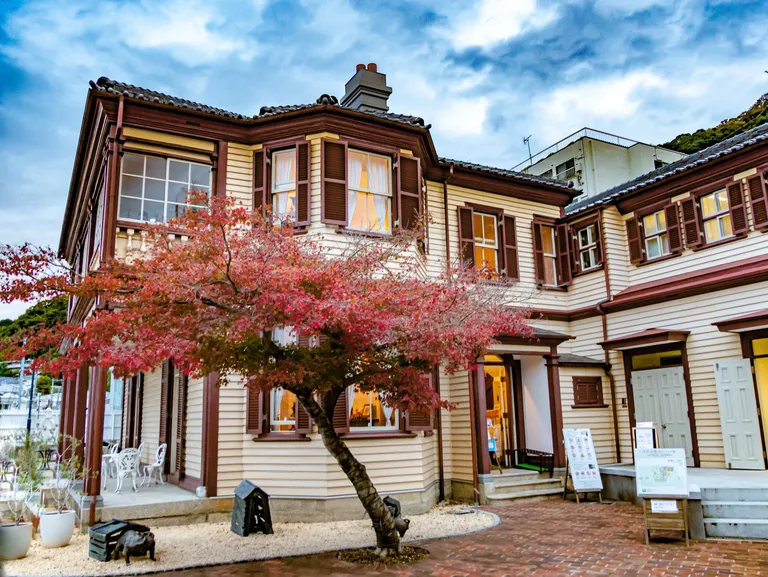
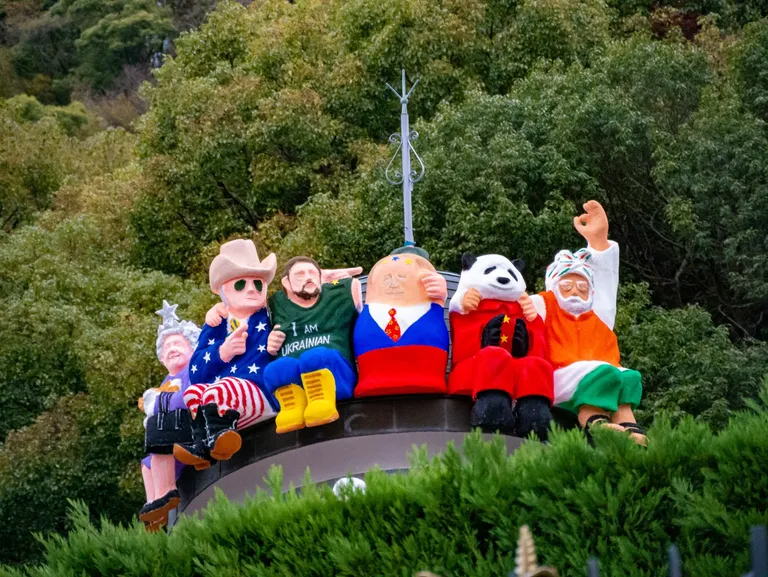
Today, I propose you a little visit to Kobe, and more particularly to Kitano Ijikan-gai. The name is a bit complicated, but it designates a district north of Kobe, in which there are western-style houses dating from the end of the 19th century or the beginning of the 20th. These photos, taken out of context, will not have anything extraordinary. However, the contrast with the rest of the city (and the neighboring Shinto shrine!) makes this area unique.
Kobe has always been a major trading port. Thus when the country reopened in the 19th century during the Meiji era, many European and American merchants landed in Kobe to do business there and some even ended up settling there!
This is how these buildings from another world were built in this district of northern Kobe. The emblematic building is called the “Weathercock House”, which is the former residence of a German merchant: Godfried Thomas. He arrived in Kobe at the very beginning of the 20th century and lived only ten years in this house before having to return to Germany at the beginning of the 1st World War. The interior can be visited, and the entrance is normally paid for, but we were able to visit it for free during a cultural event. The interior is like a museum with some objects that belonged to the Thomas family donated to the city by his descendants. It was forbidden to take pictures inside so I can’t show you more, unfortunately.
It makes the perfect transition to what this neighborhood has become. Indeed, it became a very touristic place and in particular, a privileged place for couples dating. Thus, there is a charge to enter every single building (between 500 Y and 1,000 Y or 4 - 8 euros !), and there are systematically overpriced souvenir shops.
This is explained by the fact that the buildings were bought by investors for close to nothing after the great earthquake in Kobe in 1995. Indeed, all these old structures were heavily damaged by the disaster. They were therefore repaired in their original style and then transformed into tourist attractions. Some buildings such as the one housing Starbucks have been rebuilt with the original materials! It was an American colonial-style house, partially destroyed during the earthquake, then dismantled and reassembled in a new location!
That’s all for today, I hope you enjoyed some pictures of the Kitano Ijikan-gai district in Kobe! Thank you for reading until the end and as always, do not hesitate to leave a comment!
Version Fr :
Bonjour à tous,
Aujourd’hui, je vous propose une petite visite de Kobé et plus particulièrement du Kitano Ijikan-gai. Le nom est un peu compliqué, mais il désigne un quartier au Nord de Kobé dans lequel on trouve des maisons de style occidental dans un style datant de la fin du 19ème siècle , début du 20ème. Ces photos, prises hors de leur contexte n’auront rien d’extraordinaire, mais c’est le contraste avec le reste de la ville (et le sanctuaire Shinto voisin !) qui fait que ce quartier est si particulier.
Cela s’explique par le fait que Kobé a toujours été un grand port de commerce. Ainsi lors de la réouverture du pays au 19e siècle pendant l’ère Meiji, de nombreux marchands européens et américains débarquent à Kobé pour y faire affaire et certains finissent même par s’y installer !
C’est ainsi que ces bâtiments provenant d’un autre monde ont été construits dans ce quartier du nord de Kobé. Le bâtiment emblématique est “la maison à la girouette” ou “Weathercock House” en anglais qui est l’ancienne demeure d’un marchand Allemand : Godfried Thomas. Ce dernier est arrivé à Kobé au tout début du 20e siècle et n’a vécu qu’une dizaine d’année dans cette maison avant de devoir rentrer en Allemagne au début de la 1re guerre mondiale. L’intérieur est visitable, l’entrée est normalement payante, mais nous avons pu la visiter gratuitement au cours d’un événement culturel. L’intérieur est comme un musée avec quelques objets ayant appartenu à la famille Thomas offerts à la ville par les descendants. Il était interdit de prendre de photos à l’intérieur donc je ne pourrai pas vous en montrer davantage malheureusement.
Cela fait la transition parfaite sur ce qu’est devenu ce quartier. En effet, c’est devenu un lieu très touristique et notamment un lieu privilégié pour les sorties en couple. Ainsi, l’entrée de chaque bâtiment est payante (entre 500 Y et 1 000 Y soit 4 - 8 euros tout de même !), et on y trouve systématiquement des boutiques souvenirs hors de prix. Cela s’explique par le fait que les bâtiments ont été rachetés par des investisseurs pour une bouchée de pain après le grand séisme de Kobé en 1995. En effet, toutes ces vieilles structures ont été lourdement endommagées par la catastrophe. Ils ont donc été réparés dans leur style d’origine puis transformés en attractions touristiques. Certains bâtiments comme celui qui abrite le Starbucks a été reconstruit avec les matériaux d’origine ! Il s’agissait d’une maison américaine de style coloniale, partiellement détruite lors du séisme, puis démontée et remontée dans un nouvel emplacement !
Voilà, ce sera tout pour aujourd’hui, j’espère que vous avez apprécié des photos du quartier de KItano Ijikan-gai à Kobé!
Merci d’avoir lu jusqu’au bout et comme toujours, n’hésitez pas à laisser un commentaire !
For the best experience view this post on Liketu
✒️ Pour le partage de ces photos du quartier de KItano Ijikan-gai (Kobé) nous vous offrons 💝50 points-fr 💝, un reblogue, un mini-upvote
🎁 Recevez en plus un bonus de 3 points-fr pour votre sélection et ce pourboire : !LUV !GIF tourism
💰 Plus de Tokens de 2eme couches vous attendent dans les posts de sélections et de récompenses
Récompense Multi-engagements des Francophones
Via Tenor
(4/10) sent you LUV. wallet | market | tools | discord | community | <>< daily
wallet | market | tools | discord | community | <>< daily
HiveWiki
HiveBuzz.me NFT for Peace
Merci bien!